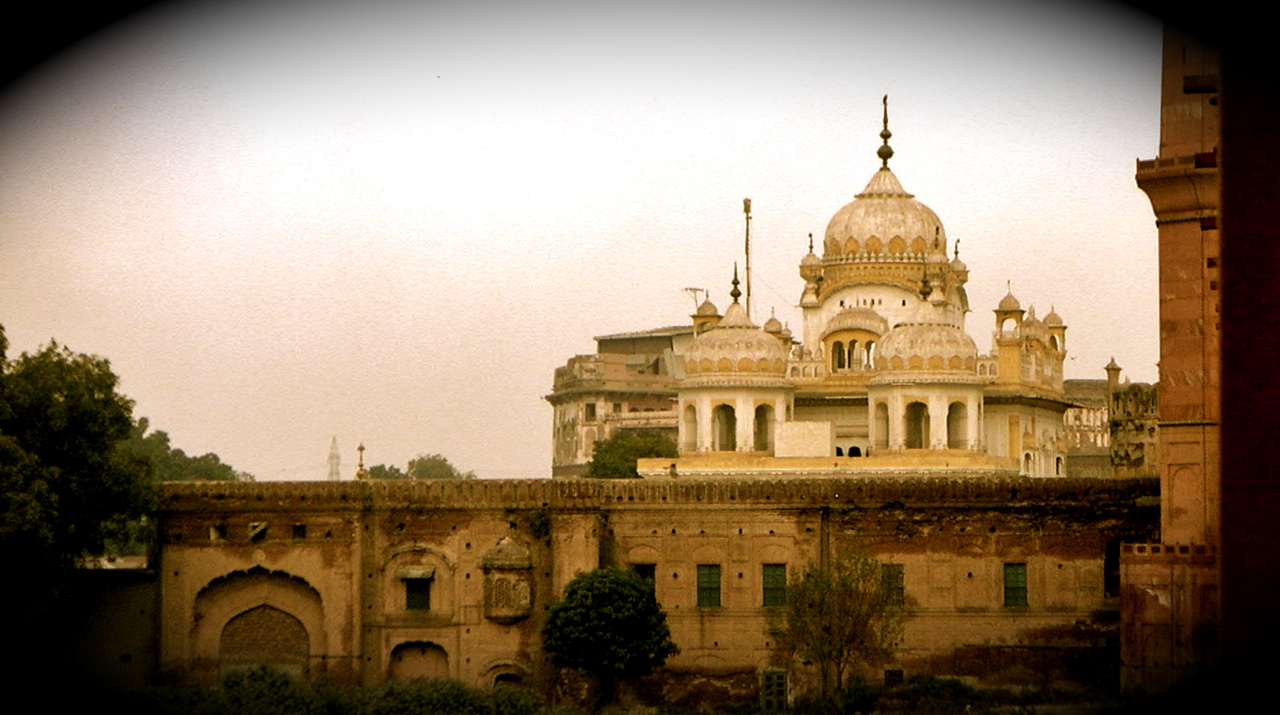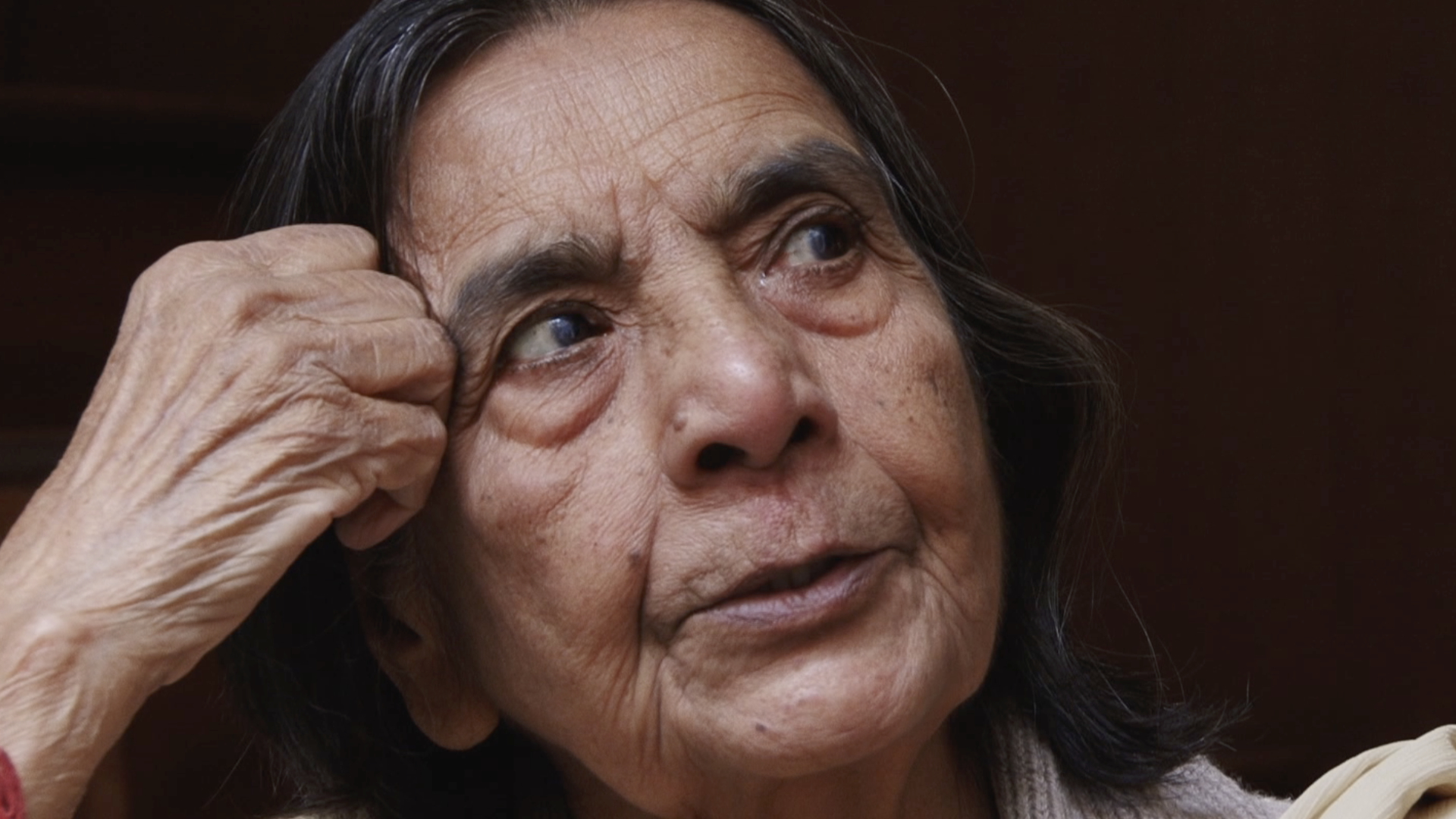Mainstream media representations of Pakistan are exotic and violent, but we know very little about the people who live there. This short documentary tries to bridge that gap by answering the question: what do the folx on the streets of Lahore think about America? Shot entirely in Lahore, Pakistan One on One (2011) is a broad survey of public opinion about issues of interest to Americans, such as democracy in Pakistan, the War on Terror, the Taliban, and American foreign policy in the region. With brisk, dynamic music by Hassan Zaman. Watch film here.
“PAKISTAN ONE ON ONE was an impromptu project. I went to Lahore in 2009 to shoot a film about the partition. The media in Pakistan had changed so dramatically that I felt compelled to explore public opinions about the news. Also, when I screened my first documentary, “The Muslims I Know” (which is based on interviews with Pakistani Americans), American audiences were eager to know what people in Pakistan thought. This film fulfills that need for dialogue.”
(Mara Ahmed, Director and Producer, March 8, 2011)
MORE INFORMATION
ARTICLES
US Caught in Big Lie About Raymond Davis by Dave Lindorff, Counterpunch, February 22, 2011
Talk about getting caught in a Big Lie. So desperate has been the US effort to get the killer Raymond Davis sprung from police custody in Lahore, Pakistan following his execution-style slaughter of two Pakistani intelligence operatives in broad daylight in a crowded commercial area, that the government trotted out President Obama to declare that Pakistan was violating the Vienna Convention on Diplomatic Relations by holding “our diplomat,” whom he insisted had only been defending himself, and should in any case be entitled to absolute immunity. Now both the Guardian newspaper in the UK over the weekend, and the Associated Press today are reporting that sources in both the Pakistani and American governments are confirming that Davis works for the CIA. More here.
The Secret US War in Pakistan by Jeremy Scahill, The Nation, November 23, 2009
At a covert forward operating base run by the US Joint Special Operations Command (JSOC) in the Pakistani port city of Karachi, members of an elite division of Blackwater are at the center of a secret program in which they plan targeted assassinations of suspected Taliban and Al Qaeda operatives, “snatch and grabs” of high-value targets and other sensitive action inside and outside Pakistan, an investigation by The Nation has found. The Blackwater operatives also assist in gathering intelligence and help direct a secret US military drone bombing campaign that runs parallel to the well-documented CIA predator strikes, according to a well-placed source within the US military intelligence apparatus. More here.
Pakistan will implode if the US does not leave Afghanistan – The continuing US presence in Afghanistan fuels extremism in neighbouring Pakistan by Imran Khan, The Observer, January 9, 2011
The assassination of Salmaan Taseer has shown only too clearly the growing extremism in Pakistan, the radicalisation of its society and the polarisation that is taking hold. This is not just between the religious and the secular, but also the polarisation that the “war on terror” has caused between the various religious sects. There were no Pakistanis involved in 9/11 and al-Qaida was then based in Afghanistan. The only militancy we were suffering was among the tribal groups who had fought against the Soviets and whose idea of jihad was a war against foreign occupation. Yes, there was sectarian violence, but suicide bombers were unheard of. More here.
Pakistanis protest civilian deaths in U.S. drone attacks by Saeed Shah, McClatchy Newspapers, December 10, 2010
Victims of U.S. drone attacks in Pakistan took to the streets for the first time here Friday, as a new report claims that there are significant numbers of civilian casualties from the strikes and a lawsuit seeks hundreds of millions of dollars in damages from the CIA for those mistakenly injured or killed. Fifteen people injured in the attacks or who claimed to have had family members killed in the bombardment appeared in public Friday and officially joined the $500 million lawsuit that began last month with just one claimant in the Pakistani courts. More here.
The real problem in the Afghan war is India, Pakistan and Kashmir by Mohsin Hamid, The Washington Post, August 8, 2010
The United States is struggling to implement a strategy for Afghanistan that will improve the lives of the Afghan people and allow U.S. troops to go home. Part of what makes it so difficult is the way Washington views the conflict: through the lens of what officials have dubbed “AfPak,” a war in the southern part of Afghanistan and the adjoining border areas of Pakistan. Though the acronym is falling out of official favor, the AfPak mind-set remains. A different shorthand for the war might help. “AfPInd” may be less catchy, but it is far more useful. Peace in AfPInd requires not U.S. troops on the ground, but a concerted effort to bring India and Pakistan to the negotiating table, where under the watchful eyes of the international community they can end their hydra-headed confrontation over Kashmir. More here.
Is Pakistan falling apart? by Patrick Cockburn, The Independent, October 8, 2010
Is Pakistan disintegrating? Are the state and society coming apart under the impact of successive political and natural disasters? The country swirls with rumours about the fall of the civilian government or even a military coup. The great Indus flood has disappeared from the headlines at home and abroad, though millions of farmers are squatting in the ruins of their villages. The US is launching its heaviest-ever drone attacks on targets in the west of the country, and Pakistan closed the main US and Nato supply route through the Khyber Pass after US helicopters crossed the border and killed Pakistani soldiers. Pakistan is undoubtedly in a bad way, but it is also a country with more than 170 million people, a population greater than Russia’s, and is capable of absorbing a lot of punishment. More here.
Author Mohsin Hamid discusses his work, BBC, June 21, 2013
Mohsin Hamid is a Pakistani author best known for his novel The Reluctant Fundamentalist (2007) which was shortlisted for the Man Booker Prize and has been adapted into a film. His three distinctly different novels all offer a vision of Pakistani modernity that challenges the prevailing stereotypes of the country since 9/11. More here.
Aging philanthropist is Pakistan’s Mother Teresa – Abdul Sattar Edhi’s years of dedication to the poor make him an icon by Chris Brummitt, Associated Press, August 29, 2010
The aging man in mud-splattered, frayed clothes has barely lowered his body onto the sidewalk when the money starts piling up. Heeding his call for donations for flood victims, Pakistanis of all classes rush to hand over cash to Abdul Sattar Edhi, whose years of dedication to the poor have made him a national icon. More here.
Pakistan: A Global Flood by Jonathan Schell, The Nation, August 26, 2010
No overarching strategy, imperial or otherwise, should be needed to inspire help to Pakistan. Nevertheless, there is another global perspective that can help make sense of the crisis and inform policy without falling into heartlessness or absurdity. As it happens, it was identified by Holbrooke in his interview with Lehrer. He suggested what a growing number of scientists have also suggested—that the floods were “a manifestation of global warming” and “possibly linked to the fires outside Moscow.” Although a direct connection between any single catastrophe and global warming cannot be proved, it’s clear by now that warming has increased the likelihood of such events. As Jean-Pascal van Ypersele, vice president of the UN’s Intergovernmental Panel on Climate Change, has commented, “Extreme events are one of the ways in which climatic changes become dramatically visible.” More here.
BOOKS
The Nine Lives of Pakistan: Dispatches from a Precarious State by Declan Walsh, 2020
Pakistan: A Hard Country by Lieven, Anatol, 2012
The Duel: Pakistan on the Flight Path of American Power by Tariq Ali, 2008.
The Reluctant Fundamentalist by Mohsin Hamid, 2007.
In Other Rooms, Other Wonders by Daniyal Mueenuddin, 2009.
The Crow Eaters by Bapsi Sidhwa, 2006.
ART
Pakistan’s Palette of Blood and Tears by by Jane Perlez, The New York Times, December 17, 2010.
Hanging Fire: Contemporary Art from Pakistan brought to New York
Some of Pakistan’s most significant, provocative, and influential artists in the first US museum survey exhibition of contemporary Pakistani art. Asia Society, NY, 2009.
Rashid Rana, Perpétuel Paradoxe
The first exhibition of Rashid Rana’s work in Paris at the Musée Guimet, November 2010.
The Rising Tide
An exhibition at the Mohatta Palace Museum in Karachi, Pakistan, of more than 40 artists is designed to show the coming of age of Pakistani art.
MUSIC
Haq Maujood by Amanat Ali and Sanam Marvi, Coke Studio Sessions, 2010.
Alif Allah, Jugni by Arif Lohar and Meesha, Coke Studio Sessions, 2010.
Umeed-e-Sahar by Laal, based on the poem by Faiz Ahmed Faiz, 2009.
Mainay Uss Say Yeh Kaha by Laal, based on the poem by Habib Jalib, 2008.
OFFICIAL TRAILER
LIST OF ALTERNATIVE MEDIA
The concentration of corporate media ownership in the US, has made it more important than ever to consult alternative, non-mainstream media in order to be well-informed about what’s going on in America and the world. For a comprehensive list of thought-provoking alternative media, please click here.







One Comment
[…] and started a dialogue between American Muslims and people of other faiths. Her second film, “Pakistan One on One”, opened at the Little Theatre in Rochester, NY in 2011 and is a broad survey of public opinion […]